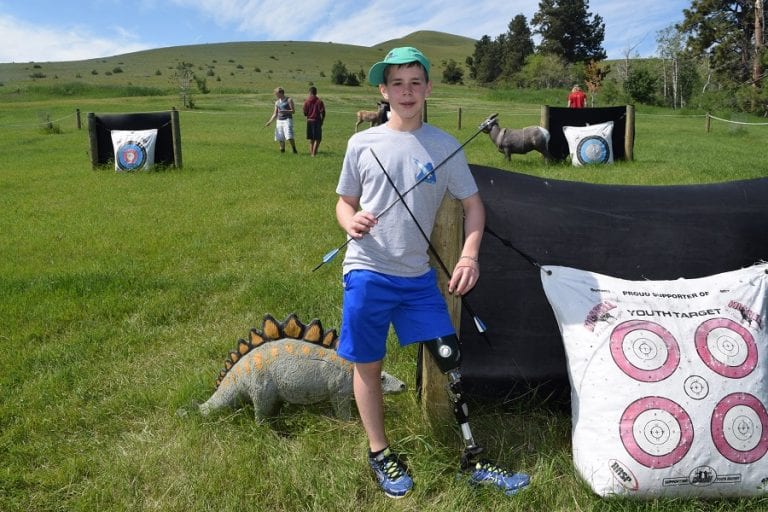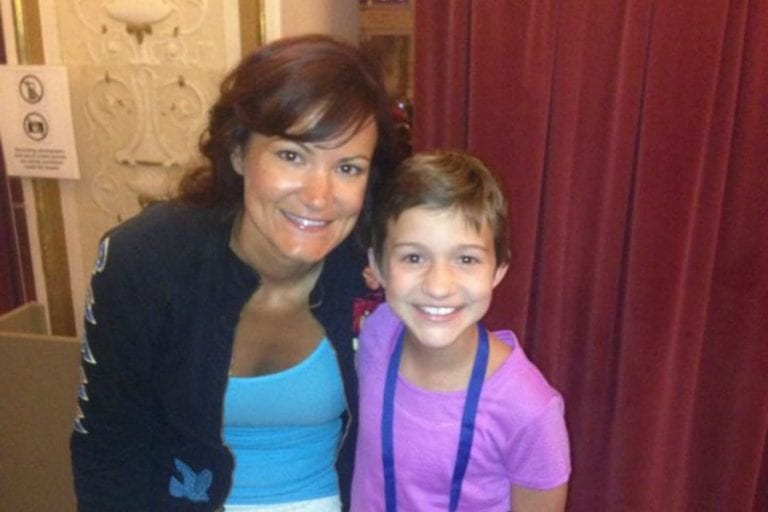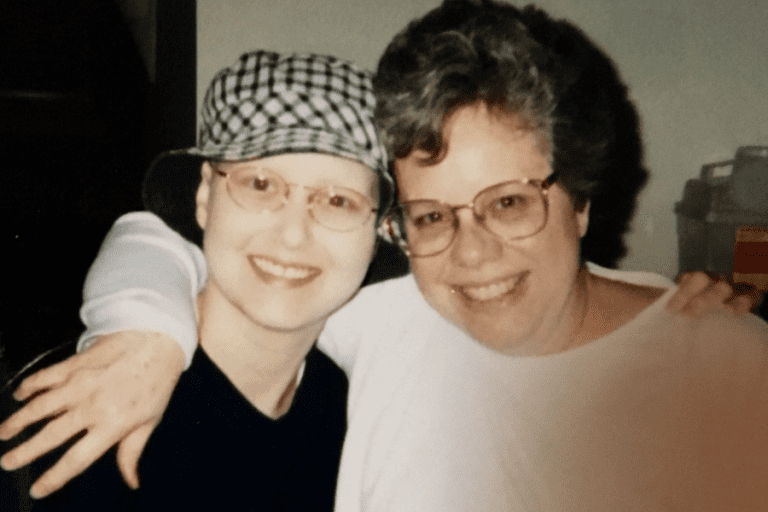From using a child’s own cells to fight cancer to creating next generation leukemia therapies, you’re helping turn researcher’s ideas into life-saving realities. Here are some of the projects you helped fund this past year.
Using a Person’s Own Immune System to Fight Cancer
When the immune system fails, cancer is allowed to grow and thrive. Branden Moriarity, PhD, and Martin Felices, PhD, think we can do better for cancer patients by isolating their own immune cells, expanding and reactivating them in the laboratory and using the cells to fight a child’s existing cancer. This treatment, called immunotherapy, has fewer side effects than either chemotherapy or radiation, and studies show that immunotherapy patients stay in remission longer.
How your donations help:
Currently, scientists use a special cell called a T cell to fight cancer, but Moriarity and Felices believe that natural killer (NK) cells could be more effective. With funding from CCRF, they plan to use a new technology to alter the genetic code of human NK cells to enhance their ability to expand, survive and kill cancer cells.
Using Tiny Particles to Deliver Drugs Directly to Cancer Cells
Thanks to donors like you, Peter Gordon, MD, PhD, has already discovered how to deliver drugs to leukemia cells using nanoparticles. Typically, these tiny particles are about 20-100 nanometers in size. To put that in perspective, a sheet of newspaper is about 100,000 nanometers thick. This novel delivery system may help cancer drugs be more effective while making patients less sick because the targeted treatment avoids healthy cells and directly activates the drug in cancer cells.
How your donations help:
Gordon will further test his nanoparticle delivery system on Ewing sarcoma and neuroblastoma cells with a drug used to treat many childhood cancers. If successful, Gordon’s idea could benefit patients with a variety of cancers around the world.
Helping Young Adults Make Decisions about Life and Death
Twenty-five percent of adolescents and young adults (AYA) who need bone marrow transplants (BMT) will not survive. And less than a quarter of these patients’ families have a plan called advance directives in place for quality-of-life decisions. Currently, advance directives are only legally binding — and thus only offered — for patients over the age of 18. But AYA patients with long histories of illness have preferences and wishes about their medical care if they are dying. Angela Smith, MD, MS, and Jennifer Needle, MD, MPH, are exploring interventions that will help AYA patients have a voice in their end-of-life decisions should they become unable to communicate them to a doctor or family member.
How your donations will help:
Researchers plan to test and evaluate a program called FAmily-CEntered (FACE) Advance Care Planning intervention to explore the unique needs, perspectives and decision-making processes of AYA BMT patients.
The Next Generation of Leukemia Therapy
Children with B cell leukemia are more likely to get infections because they don’t have the protection of B cells, which are part of the immune system. Currently, a treatment called hematopoietic cell transplantation (HCT) is used for children with this type of leukemia. Though effective in some patients, HCT preparation is highly toxic, and when children relapse, it is associated with a poor outcome. Mark Osborn, PhD, is working on an innovative solution that could have an immediate impact on childhood leukemia.
How your donations help:
Today, scientists can engineer a special immune system cell called a T cell to “seek and destroy” a certain protein on B cells that causes the disease. Now that Osborn knows these special T cells can target the proteins, he’s fine-tuning the control of the T cells so they don’t cause potentially fatal side effects. He is testing an “on” and “off” switch on the T cell that will let it target the cancer while allowing the child’s immune system to recover and function once the tumor is eradicated.
Early Leukemia Detection in Newborns
Leukemia is the most common childhood cancer, representing approximately one-third of all cancer diagnoses among children under the age of 14. Studies show that acute lymphoblastic leukemia (ALL), the most common type of leukemia in children, begins in the womb. Researchers discovered a genetic error that is present at birth in some children who later develop ALL. It is not clear how many children have this error at birth, and whether it can be used to identify children who will develop ALL.
How your donations help:
Erin Marcotte, PhD, and Heather Nelson, PhD, will test a new method using advanced genetic sequencing to detect this genetic error. This will help researchers determine whether the genetic error is an accurate predictor of leukemia, helping doctors detect ALL early and increase a child’s chance of survival.
Eliminating Deadly Graft-versus-Host Disease
When a child gets a stem cell transplant, he or she can be at risk for the life-threatening graft-versus-host disease (GVHD). This disease develops when the donor’s immune cells mistakenly attack the child’s normal cells. Nearly half of patients with severe GVHD will die. But thanks to donors like you, we’re able to fund two projects that could eliminate this fatal disease once and for all.
How your donations help:
Oftentimes, GVHD attacks a child’s digestive system, which causes side effects like abdominal pain or cramps, nausea and vomiting. Bruce Blazar, MD, will test two methods to prevent the disease in the digestive system. He has developed a new therapy that changes the environment in the digestive system and significantly reduces GVHD. Blazar plans to build up the immune-controlling environment before transplant. He will do this by using a special protein to stimulate the parts of the immune system that help prevent bacteria and food proteins from hurting the patient. Another way he plans to defeat GVHD is by taking the parts of the donor’s immune system that prevent disease and multiplying and enhancing them so they can be even more effective in a patient.
Lucie Turcotte, MD, MPH, MS, will examine whether an association exists between donor obesity and GVHD. Both obesity and GVHD are classified as chronic inflammatory diseases, and many transplant donors are obese. To test her theory that there may be a connection, she’ll perform genetic studies on donor blood cells, examining whether specific genetic changes increase risk for GVHD, and measure donor inflammatory status and correlate with recipient GVHD outcomes. If she finds a correlation, this will help doctors select donors who will not put the patient at risk for GVHD, thus reducing GVHD for children everywhere.
National Clinical Trials Research
Children’s Cancer Research Fund awarded nine hospitals around the United States with grants of $20,000 each to fund early phase and clinical trials research.
The grants, done in partnership with Momcology, allow doctors and researchers to open up more clinical trials in their areas, enroll more patients in the trials and test the effectiveness of new technologies and procedures in cancer treatment.
With more resources and opportunities, doctors are improving the chances for survival and quality of life for more children with cancer. Many of today’s treatment protocols were developed 30 to 40 years ago; clinical trials are crucial to helping researchers identify innovative new therapies and treatments.
All nine hospitals are members of the Children’s Oncology Group Phase I & Pilot Consortium, which was formed to ensure more rapid development of new therapies for childhood cancer patients. This group serves as a national and international model for new drug development in pediatric oncology.
The following hospitals received these grants:
Thanks to the efforts of all Great Cycle Challenge riders, here is just the beginning of what will be funded with the over $3 million raised from this year’s event:
Ann and Robert H. Lurie
Children’s Hospital of Chicago
Chicago, IL Grant support will fund key personnel who are dedicated to early-phase clinical trials. Having expert personnel in place will allow researchers to pursue a wide range of studies.
Children’s Healthcare of Atlanta – Egleston
Atlanta, GA This grant will provide much-needed relief for families who are traveling great distances to participate in clinical trials and who have travel and lodging expenses.
Children’s Hospital of Colorado
Aurora, CO Funding will help hire and train specialized staff to carry out clinical trials and allow more children and teens to enter into trials. Caring for patients in early-phase trials requires significant time and expertise.
Children’s Hospital of Los Angeles
Los Angeles, CA Grant support will help the hospital enroll more children in clinical trials, opening innovative treatments to patients who would not have had the opportunity otherwise.
Children’s Hospital of Philadelphia
Philadelphia, PA This grant will test the effectiveness of a new blood draw/microsampling device called The Mitra. If successful, this device could improve the patient experience during clinical trials by decreasing the amount of time patients and families are required to be in the clinic and by decreasing required blood volume, all while preserving the goal to evaluate the safety of new drugs in children.
Children’s National Health System
Washington, DC This grant will underwrite software and sample analysis/imaging tools to help doctors evaluate and adjust patient care in trials, provide funding for community outreach to recruit patients for trials and support an oncology fellow.
Dana-Farber Cancer Institute
Boston, MA Grant support will fill current funding gaps such as repeat pre-screenings like blood work and scans prior to clinical trials, which can’t be billed to insurance. Also, funding will help support early phase clinical trials by maintaining expert research staff.
St. Jude Children’s Research Hospital
Memphis, TN The grant will support the work of a clinical research nurse to abstract and submit required data and assist with the management of patients on these studies allowing the team to recruit more patients for clinical trials.
Seattle Children’s Hospital
Seattle, WA Funding will support clinical trials focused on new therapies that target molecular and immunologic pathways, thereby reducing late effects.




